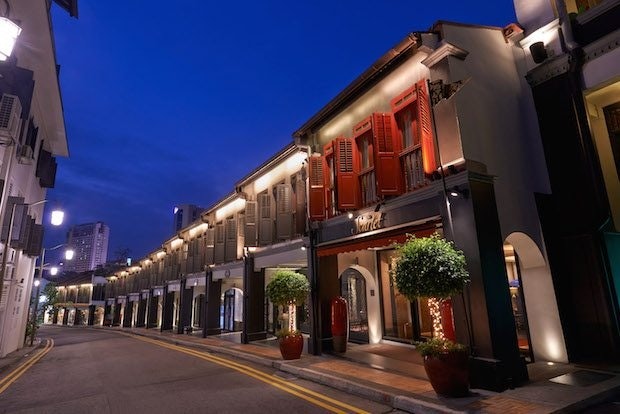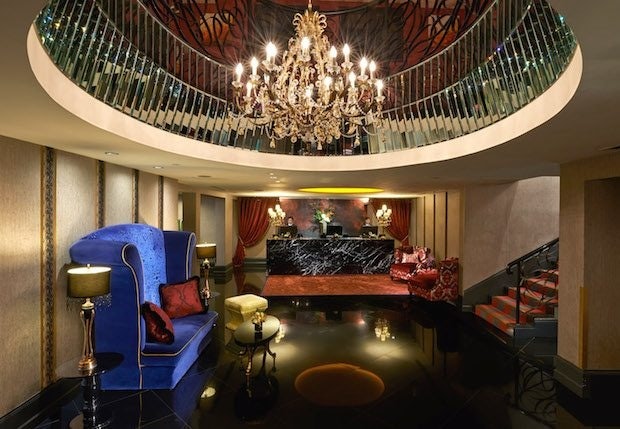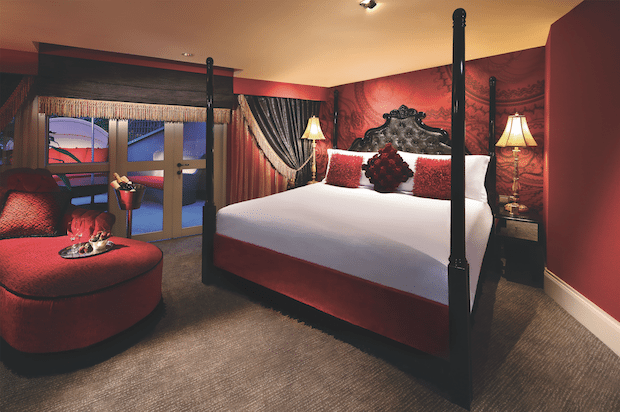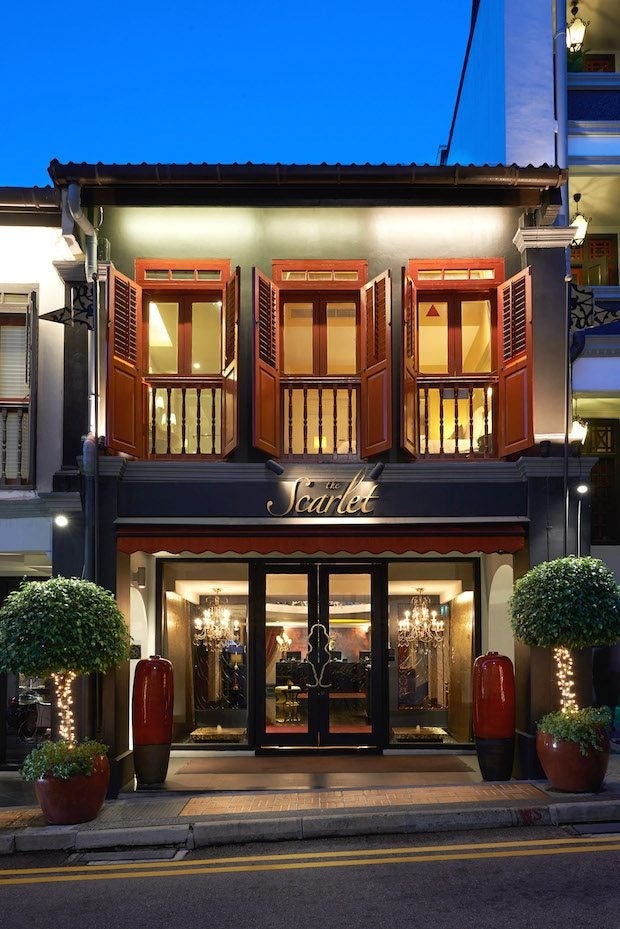
The luxury boutique hotel The Scarlet is located in a row of historic converted shophouses in Singapore's Chinatown. (Courtesy Photo)
As an experienced segment of affluent outbound Chinese tourists is increasingly turning away from group tours and cookie-cutter accommodations, they’re seeking out unique luxury boutique hotels on independently planned trips. As Chinese traveler numbers show signs of a possible rebound for Singapore this year, stylish neighborhoods across the city-state are taking notice.
Located in Singapore’s historic Chinatown, boutique luxury hotel The Scarlet has witnessed the rise of the independent Chinese traveler firsthand. Housed in a converted 1924 Art Deco building and row of 1868 shophouses, the hotel features bold design inspired by the theme of an “enigmatic gracious hostess” with bright, opulent jewelry-inspired colors likely to please Chinese visitors including purple, fuchsia, gold—and keeping with the hotel’s name—lots of red.

The Scarlet's opulent lobby. (Courtesy Photo)
The lobby features a luxe beaded wall, chandelier, and velvets and textiles by Sonia Rykiel, Christian Lacroix, JAB, and Pierre Frey. The rooms are aimed at conveying a sense of the gracious hostess’s “grand abode,” decorated with more luxury-branded fabrics in hues of amethyst, emerald, ruby, sapphire, gold, peridot, bold chartreuse, and emerald. The 80 rooms include five individually themed suites titled “Swank,” “Opulent,” “Lavish,” “Passion,” and “Splendour” with their own unique decor and amenities, such as a S$38,500 bed from Swedish brand Hästens made of natural fillings horsehair, flax, wool, and pine in the “Lavish” suite and a $10,000 custom wall covering in the “Passion” room.

The Scarlet's "Passion" suite features much of the color that is the hotel's namesake, and is popular with Chinese couples. (Courtesy Photo)
Mainland Chinese guests currently make up The Scarlet’s fifth-largest group of visitors, and the hotel has benefited from growing demand for independent travel and boutique accommodations. “We have noticed that the Chinese guests are no longer taking the package tours that were once very popular with the Chinese tourists,” says Donny Yip, the hotel’s director of sales. “They now have greater desire to experience independent forms of travel, usually traveling solo or as a couple.”
According to Yip, the hotel’s Chinese visitors “love the idea of a luxury boutique hotel set in a heritage building in the historical Chinatown.” The location gives guests easy access to Chinatown’s top historic sites as well as an influx of hip new spots popping up in the area. From the hotel, Chinese tourists are in close walking distance to key Chinatown attractions such as important Buddhist and Hindu temples, as well as sites to learn about Chinese heritage in Singapore such as the Chinatown Heritage Center and the Peranakan Museum, which covers the history of Chinese immigrants to Malaysia and Singapore.

The entrance to The Scarlet in Singapore's Chinatown. (Courtesy Photo)
In addition, the hotel appeals to trendy young Chinese travelers as a member of Chinatown’s stylish Club Street community, which includes creative agencies, specialty shops, spas, restaurants, cafes, wine bars, antique shops, and art galleries. “Visiting as many attractions as possible remains an important part of the Chinese guests’ holiday plan,” says Yip. “However, besides the usual attractions in Chinatown and Sentosa, the Chinese guests are exploring more entertainment and relaxation options in Clarke Quay and Club Street (which is located just around the corner from The Scarlet Singapore)."
According to Yip, The Scarlet, which focuses on independent travelers, hasn’t been affected by last year’s Chinese visitor number slump to Singapore, which was mainly caused by a decline in multi-country group tours that included Malaysia. Singapore has been pumping money into China tourism marketing after a 24.1 percent decline in Chinese visitor numbers in 2014 that was part of an overall decline in Southeast Asia, caused by several factors including the Malaysia Airlines MH370 disaster. The first half of the year has shown signs of recovery, with 663,078 Chinese arrivals in the first four months of 2015. While the number still marked a year-on-year decrease, Chinese New Year arrivals in February were at 238,008, up from 203,600 in 2014.